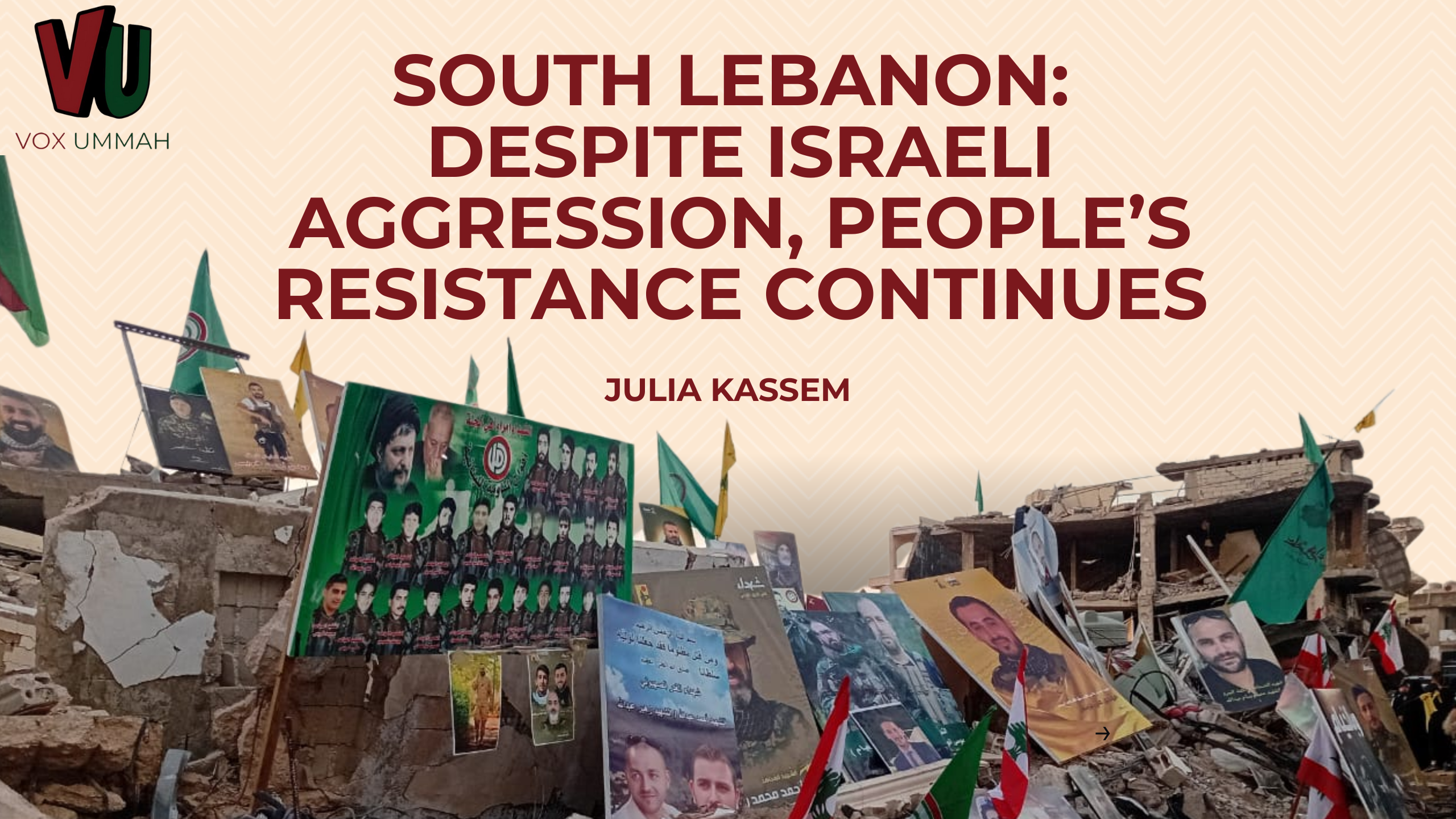
by Julia Kassem
On March 23rd, the Zionist entity repeated the Majdal Shams scenario and claimed that an influx of rocket fire coming from Lebanon was Hezbollah, which the Lebanese Resistance themselves denied. That day, “Israel” flared its wrath and killed several in Tulin as well as in Tyre, South Lebanon in attacks unprecedented since the November 2024 ceasefire.
As the regional situation explodes in volatility, with the US making clear its commitment to punish resistance regionally, a renewed expansion of aggression against Yemen and resumption of genocide in Gaza. Yemen severed the US and Zionist entity’s sea supply routes, Lebanon remains at the heart and crux of the entity’s wrath, due to its physical proximity to the entity, the threat and ability of the Resistance to strike anywhere into its territory and the long-standing threat of the elite Radwan division storming in to liberate Palestine from the north. It is due to these reasons, among others, that Lebanon and the elimination of its resistance has always been an existential objective at the forefront of the US and Zionist entity’s objectives.
On February 18, there were five points where the Zionist entity remained and refused to withdraw from – Al-Labounneh near the Naqoura Outskirts, near Jal al-Deir in Aitaroun, near Hamames Hill opposite of Metulla, visible from Kfar Kila but south of Khiam, Jabal Blat in Marwahin and Remyeh, and the outskirts between Markaba and Houla. After the so-called ceasefire deadline, a one-sided extension demanded by the Zionist entity not only remained in these five points, declaring them to be sites of indefinite occupation – as Israeli War Minister Katz arrogantly declared days ago – but also seeks to control the roads connecting them.
It couldn’t be clearer that the goal established during the period of extended occupation was to set the stage for a new so-called ‘security belt’ to be established, a launching ground expanding into Lebanon in a futile attempt to return the equation to the days of the 1978 occupation of the country’s South.
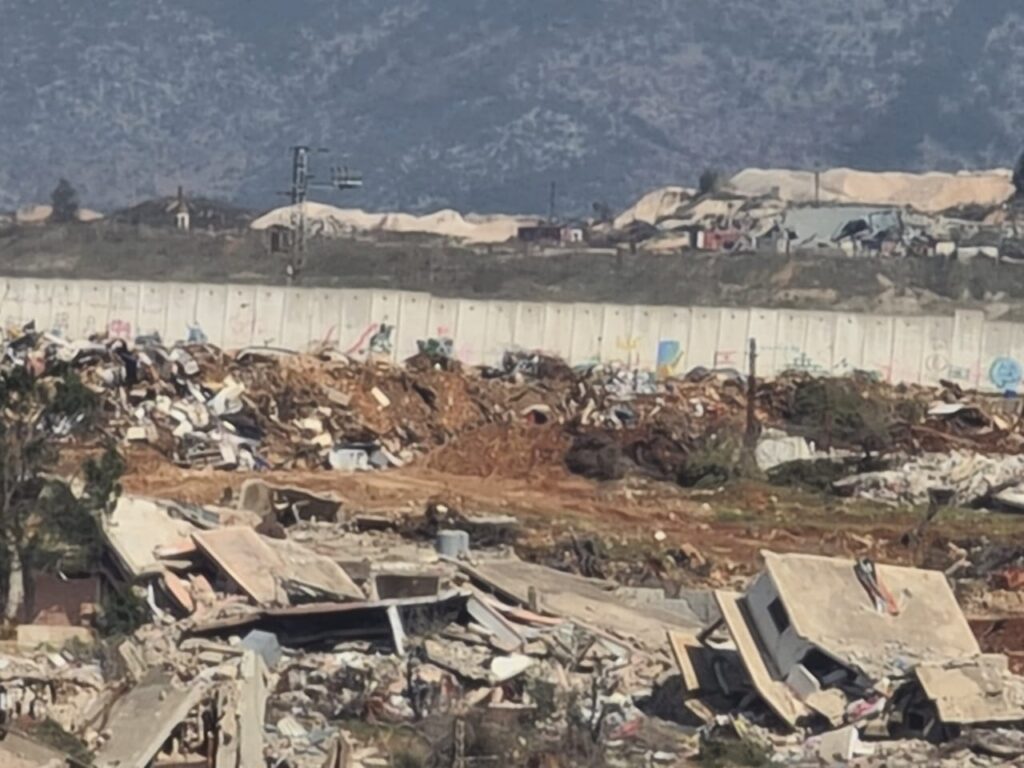
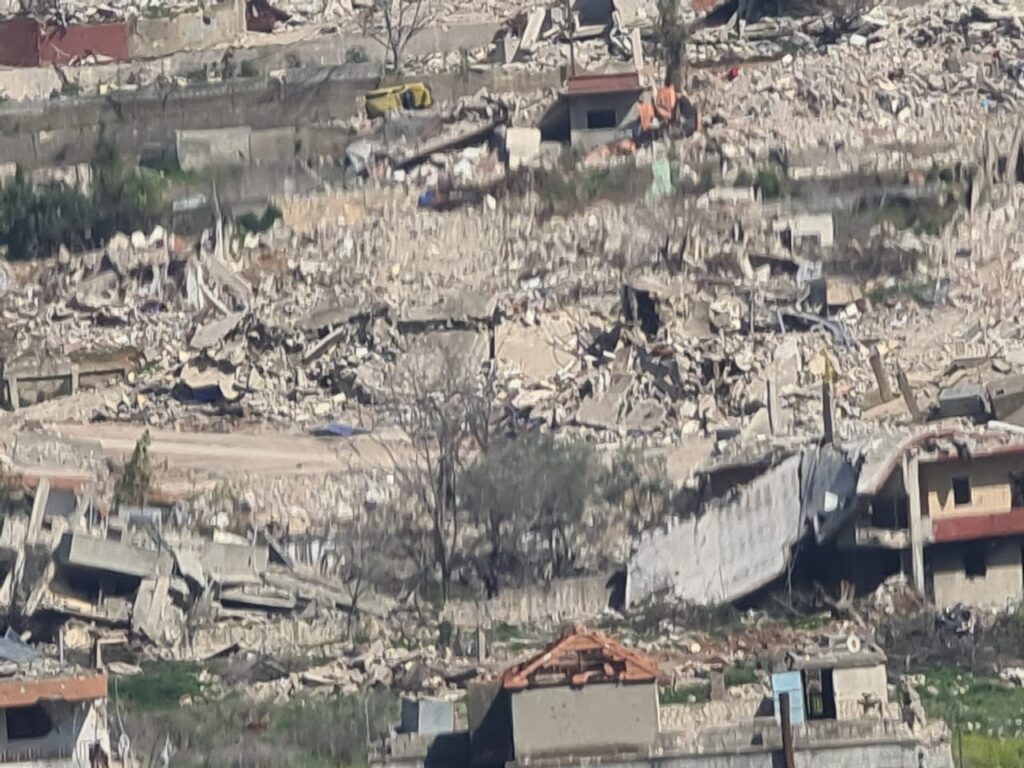
On top of the ruins of Kfar Kila, the Zionist entity established an illegal point on top of the Hamamas hill.
Entire roads are closed off, such as the road from Odeisseh connecting to Kfar Kila, the Markaba-Houla roads in the east to the Western Sector, to Jabal Blat and Naqoura. Israel isn’t just occupying five points – it seeks to occupy an entire latitude jutting across Lebanese soil, ready to cement the stage for a completely new ‘buffer zone’ and launch pad for expanded invasion. While the US tempered Israeli demands for yet another extension of the so-called ceasefire, they’ve provided the logistical, political and material cover for occupation and continued blackmail – taking advantage of Beirut’s need for economic reconstruction and recovery by linking it to normalization with “Israel” as a precondition. This reflects the ‘potential’ Steven Witkoff said he saw for both Syria and Lebanon to enter into a normalization agreement and the long-standing plan reflected via the World Bank and International Monetary Fund – especially evident in the objectives during the post-2019 economic crisis: to link normalization with “Israel” and disarmament of the resistance into economic recovery.
Meanwhile, the routine attacks on civilian vehicles – targeting off-duty Hezbollah members going about their day, outside the context of battle – have become more incessant. Nearly every day since the US delegation made their last visit to Lebanon, there have been deadly drone attacks on vehicles, terrorizing locals. Yet, it represents yet another extension of Israel’s demonstrated impunity it exercises without inhibitions in Lebanon.
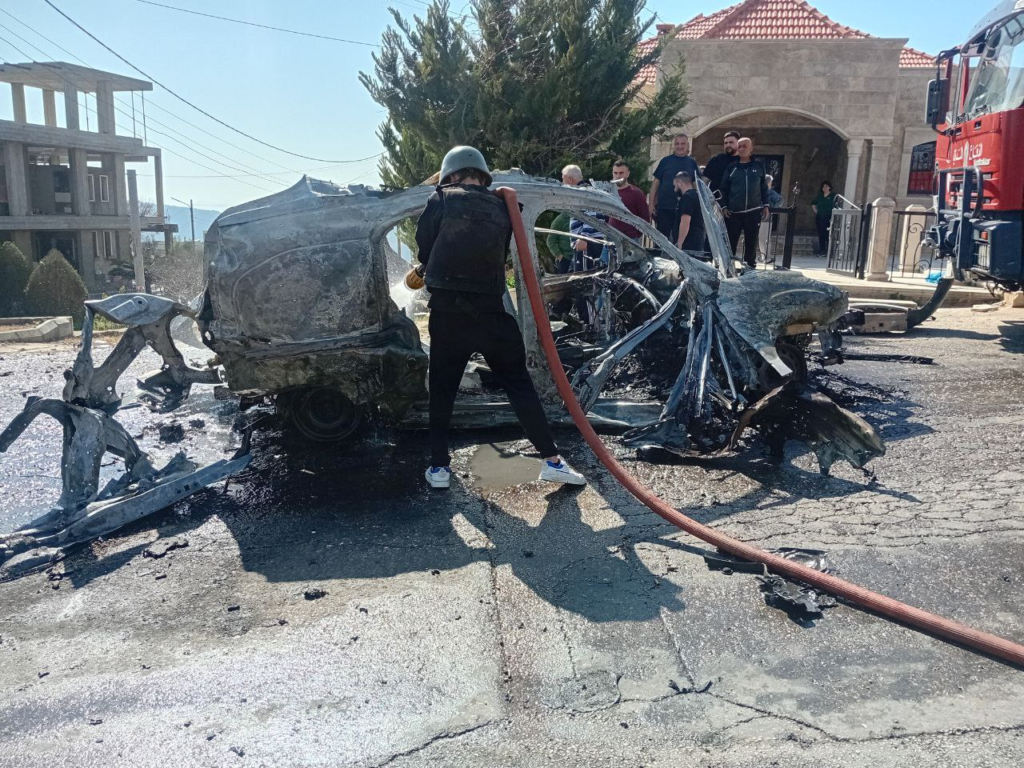
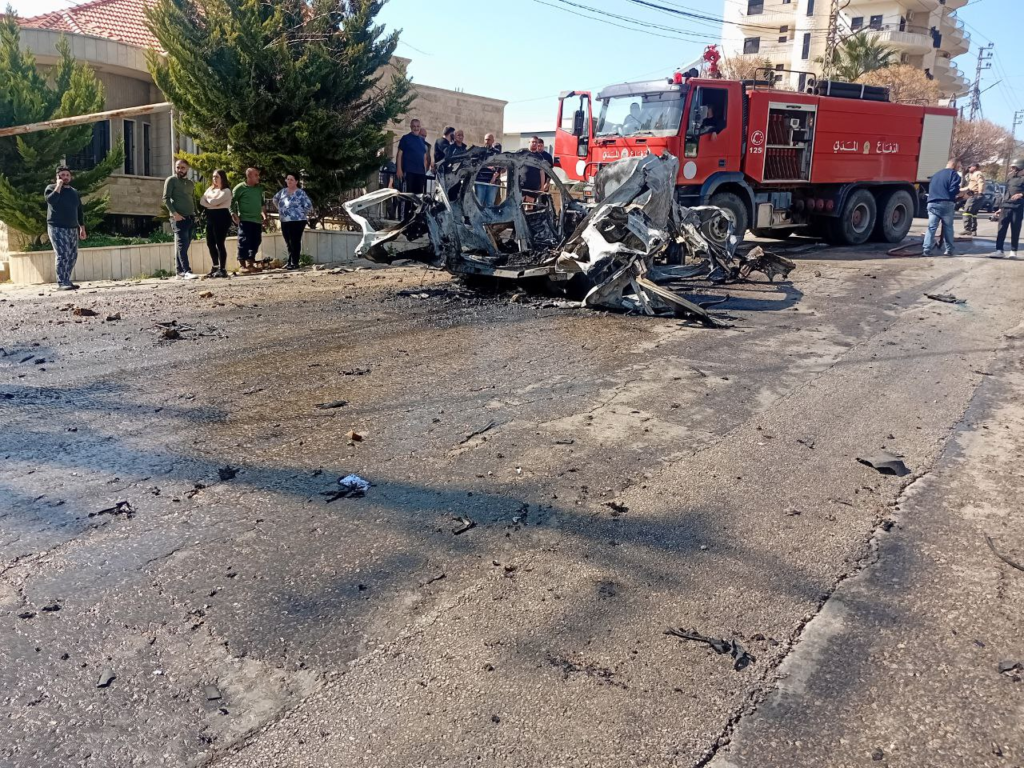
The photos taken by the author show the immediate aftermath of the Zionist entity’s targeted attack on a vehicle in the south Lebanese town of Burj al-Muluk – Saturday, March 15
The appointment of former Lebanese Army commander Joseph Aoun to presidency, after years of serving the US Ambassador, is one of many steps Washington has taken to consolidate its influence over Lebanon – increasingly forceful steps to aggressively isolate and eliminate Hezbollah.
The Lebanese Army, through economic and political coercion, has been pulled out of its role of protector of the state and its people – which is nothing new, but now taken to new lows since the latest war on Lebanon. The army was instructed against assisting the displaced, or repairing border crossings Israel destroyed – and turned into an auxiliary and weakened containment force for US mandates in the region. With the ascension of a thoroughly compliant President and Prime Minister to the Lebanese administration – the latter, Nawaf Salam, who said that the slogan “People, Army, Resistance” is a “thing of the past,” and “investments will not come to Lebanon as long as there are weapons outside the authority of the state.”
Just a week ago, US officials again toured Lebanon to put diktats into place and pressure the new government for concessions. It’s highly likely that the case of the five occupation points – and the expansion of attacks on Lebanese civilians and their hometowns – will be used as leverage for the US and Israel to push for its long-sought-after objectives to be met at the negotiating table – such as disarmament of Hezbollah and normalization with Israel.
Throughout the so-called ceasefire, the Zionist entity aimed to prevent residents of villages from returning back to their homes and villages, shooting and killing residents who defiantly stayed and bombing others in their homes. In the meantime, the Israel occupation and America are focused not only on waging deadly counterinsurgency against Hezbollah to safeguard their control over Lebanon’s political space – but also on attacking any attempts for residents to return and inhabit their villages. Just as Israel’s genocidal campaign in Gaza seeks to erase all signs of life in the enclave, so too does its siege on southern Lebanon.
In the recent aftermath, Israel stormed mobile homes for displaced southerners that were returning to their villages. Just last Tuesday night (March 18), mobile homes set up next to small makeshift cafes and shops were hit and torched by four bombings from Israeli Apache helicopters, murdering five people and destroying a number of mobile homes. It’s clear that in addition to operating under the pretext of squashing the Lebanese resistance, the Zionist entity also wants to clear the lands of its inhabitants within the parameters of its hoped-for ‘buffer zone’ through the continued destruction of infrastructure, mobile homes, and makeshift shops in border towns and the wanton killing of residents.
Nonetheless, Southerners retain their steadfastness. In the village of Khiam, where the Zionist entity shakily maintains a military occupation point at the Hamameh hills south of the village at the border, residents continue to return to the village – despite the widespread rubble – to, as one resident said, borrowing in the words of the late Sayyed Hassan Nasrallah, “proudly pitch our tents under the rubble until our homes are returned better than they were.”
The same day the Zionist entity attempted to terrorize locals with additional drone strikes and attacks on cars, residents of Khiam gathered to carry on a 3 year tradition of holding a large community Iftar.
Locals pitched photos of martyrs amidst the rubble that lined the massive rows of tables and chairs, honoring sacrifices of their community’s martyrs in messages and displays of steadfastness and pride.
“This gathering of local families here gives a character of strength, steadfastness, and defiance against the Israeli enemy lurking on our borders,” one Khiam man said, adding with confidence that “they won’t be present for long,” from the 5+ points of occupation, “because this is our land, we are the people of this land, and no one can take it from us.”
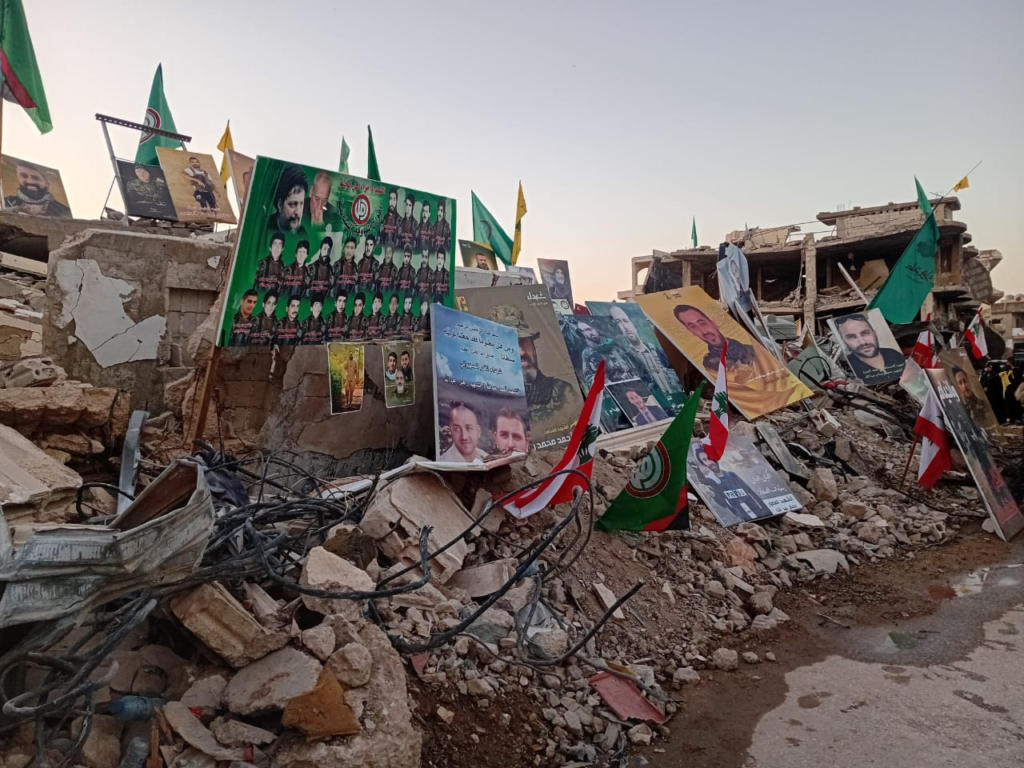

Despite the material blows that the resistance has incurred and the suffering inflicted upon the region, the Israeli occupation sinks further into its own internal contradictions.
Unable to achieve its objectives in crushing the resistance groups – who still retain their upper hand in their demands and in negotiations – the occupation is unable to return its settlers to the North of Occupied Palestine or around the Gaza envelope settlements, and no amount of assassinating leaders can salvage the Zionist entity’s crisis in leadership.
Even Barak Ravid, former Israeli intelligence officer and writer for the American intelligence lined platform “Axios” conceded that the Zionist entity collapsed its own agreement, as it never intended to implement and ‘force Hamas into an alternative agreement.’
The numerous collapses and breaks in the Zionist entity’s own government over the 14 months of the war’s first phase, the increasing rift between the Netanyahu/Ben Gvir/Smotrich camp vs the Gallant camp, and the increasing discord of the settler public are but a few testaments to the fragility of the entity that – despite all the destruction it has incurred – remains ‘weaker than a spiders’ web.’